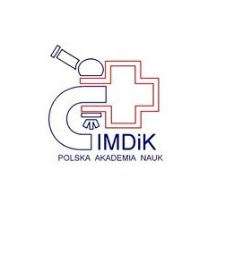- Search in all Repository
- Literature and maps
- Archeology
- Mills database
- Natural sciences
Advanced search
Advanced search
Advanced search
Advanced search
Advanced search

Object
Title: Perspektywy terapii komórkowej w chorobie Parkinsona.
Subtitle:
Perspectives of Cell Theraphy in Parkinson's Disease
Publisher:
Place of publishing:
Description:
Type of object:
Abstract:
Both experimental studies and preliminary results of clinical trials performer during the last few years showed that supplementation of striatum by cells producing dopaminę may be effective in the treatment of Parkinson's disease. The use of neural progenitor cells cultured in vitro and directed dopaminergically by exposition to specific instructive factors or by genetic manipulation, results mainly from practical premises. This may allow to overcome the problem of limited availability of human tissue required for transplanta¬tion, to enhance epidemiologic and genetic control of biologic material and to standardize the whole procedure.The perspective of using mature, tissue-specific stem cells from such sources as bone marrow or placental blood (also from skin, olfactory epithelium, etc.) is becoming very real, thus supplying autologous grafts and overcoming difficult ethical and legal problems associated with the use of embryonal stem cells. The use of own host cells for transplantation (or their correct selection from a wide range of available cultured cel lines) would provide optimal conditions for good transplant “take" , it's full integration with host tissues and restoration of normal neural connections in the damaged striatum. This thesis is supported by recently published results of experimental studies on animal models of Parkinson’s disease, indicating the possibility of functional reconstruction of damaged corticobasal circuits after intracerebral transplantation of stem cells. Highlighted are significant problems, which must be solved, before this method will be intoduced into clinical practice.
References:
bibliografia s. 196-198
Relation:
Detailed Resource Type:
Format:
Resource Identifier:
Language:
Language of abstract:
Rights:
Creative Commons Attribution BY 4.0 license
Terms of use:
Copyright-protected material. [CC BY 4.0] May be used within the scope specified in Creative Commons Attribution BY 4.0 license, full text available at: ; -
Digitizing institution:
Mossakowski Medical Research Institute PAS
Original in:
Library of the Mossakowski Medical Research Institute PAS
Projects co-financed by:
Access:
Object collections:
- Digital Repository of Scientific Institutes > Partners' collections > Mossakowski Medical Research Institute PAS > Publications of the Institute employees
- Digital Repository of Scientific Institutes > Literature > Books/Chapters
Last modified:
Mar 24, 2022
In our library since:
Mar 20, 2019
Number of object content downloads / hits:
614
All available object's versions:
https://rcin.org.pl./publication/84318
Show description in RDF format:
Show description in RDFa format:
Show description in OAI-PMH format:
| Edition name | Date |
|---|---|
| Janowski, Mirosław, 2003, Perspektywy terapii komórkowej w chorobie Parkinsona | Mar 24, 2022 |
Objects Similar
Gawęda- Walerych Katarzyna
Kida, Elżbieta
Domańska-Janik, Krystyna
Domańska-Janik, Krystyna
Janowski, Mirosław
Strosznajder, Joanna

 INSTYTUT ARCHEOLOGII I ETNOLOGII POLSKIEJ AKADEMII NAUK
INSTYTUT ARCHEOLOGII I ETNOLOGII POLSKIEJ AKADEMII NAUK
 INSTYTUT BADAŃ LITERACKICH POLSKIEJ AKADEMII NAUK
INSTYTUT BADAŃ LITERACKICH POLSKIEJ AKADEMII NAUK
 INSTYTUT BADAWCZY LEŚNICTWA
INSTYTUT BADAWCZY LEŚNICTWA
 INSTYTUT BIOLOGII DOŚWIADCZALNEJ IM. MARCELEGO NENCKIEGO POLSKIEJ AKADEMII NAUK
INSTYTUT BIOLOGII DOŚWIADCZALNEJ IM. MARCELEGO NENCKIEGO POLSKIEJ AKADEMII NAUK
 INSTYTUT BIOLOGII SSAKÓW POLSKIEJ AKADEMII NAUK
INSTYTUT BIOLOGII SSAKÓW POLSKIEJ AKADEMII NAUK
 INSTYTUT CHEMII FIZYCZNEJ PAN
INSTYTUT CHEMII FIZYCZNEJ PAN
 INSTYTUT CHEMII ORGANICZNEJ PAN
INSTYTUT CHEMII ORGANICZNEJ PAN
 INSTYTUT FILOZOFII I SOCJOLOGII PAN
INSTYTUT FILOZOFII I SOCJOLOGII PAN
 INSTYTUT GEOGRAFII I PRZESTRZENNEGO ZAGOSPODAROWANIA PAN
INSTYTUT GEOGRAFII I PRZESTRZENNEGO ZAGOSPODAROWANIA PAN
 INSTYTUT HISTORII im. TADEUSZA MANTEUFFLA POLSKIEJ AKADEMII NAUK
INSTYTUT HISTORII im. TADEUSZA MANTEUFFLA POLSKIEJ AKADEMII NAUK
 INSTYTUT JĘZYKA POLSKIEGO POLSKIEJ AKADEMII NAUK
INSTYTUT JĘZYKA POLSKIEGO POLSKIEJ AKADEMII NAUK
 INSTYTUT MATEMATYCZNY PAN
INSTYTUT MATEMATYCZNY PAN
 INSTYTUT MEDYCYNY DOŚWIADCZALNEJ I KLINICZNEJ IM.MIROSŁAWA MOSSAKOWSKIEGO POLSKIEJ AKADEMII NAUK
INSTYTUT MEDYCYNY DOŚWIADCZALNEJ I KLINICZNEJ IM.MIROSŁAWA MOSSAKOWSKIEGO POLSKIEJ AKADEMII NAUK
 INSTYTUT PODSTAWOWYCH PROBLEMÓW TECHNIKI PAN
INSTYTUT PODSTAWOWYCH PROBLEMÓW TECHNIKI PAN
 INSTYTUT SLAWISTYKI PAN
INSTYTUT SLAWISTYKI PAN
 SIEĆ BADAWCZA ŁUKASIEWICZ - INSTYTUT TECHNOLOGII MATERIAŁÓW ELEKTRONICZNYCH
SIEĆ BADAWCZA ŁUKASIEWICZ - INSTYTUT TECHNOLOGII MATERIAŁÓW ELEKTRONICZNYCH
 MUZEUM I INSTYTUT ZOOLOGII POLSKIEJ AKADEMII NAUK
MUZEUM I INSTYTUT ZOOLOGII POLSKIEJ AKADEMII NAUK
 INSTYTUT BADAŃ SYSTEMOWYCH PAN
INSTYTUT BADAŃ SYSTEMOWYCH PAN
 INSTYTUT BOTANIKI IM. WŁADYSŁAWA SZAFERA POLSKIEJ AKADEMII NAUK
INSTYTUT BOTANIKI IM. WŁADYSŁAWA SZAFERA POLSKIEJ AKADEMII NAUK


































